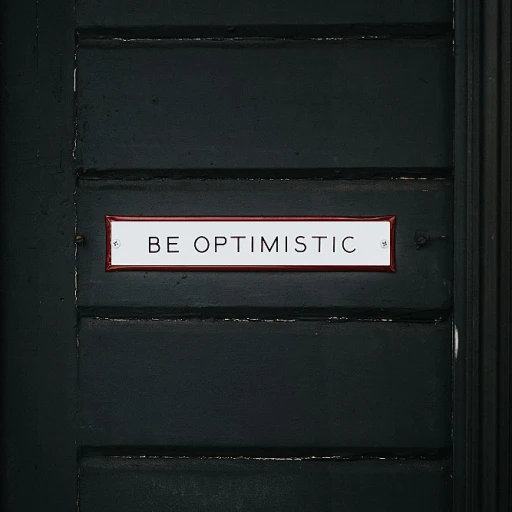
Understanding the Power of Words in Employer Branding
The Influence of Language on Employer Branding
In the realm of employer branding, the power of words cannot be overstated. Words are not just mere tools for communication; they shape perceptions, influence emotions, and ultimately, drive decisions. When it comes to describing your workplace, the vocabulary you choose can significantly impact how potential employees perceive your company culture and work environment.
Consider how words like 'innovative', 'collaborative', or 'dynamic' can paint a picture of a vibrant work culture, while terms like 'rigid' or 'hierarchical' might suggest a more structured, possibly restrictive environment. The right words can create a positive image that aligns with your company values and attracts the best talent, enhancing employee engagement and job satisfaction.
In crafting your employer brand, it's crucial to identify the words that best describe your workplace. These words should reflect not only the physical environment but also the intangible aspects of your company culture. They should resonate with your current employees and appeal to potential candidates, creating a sense of belonging and shared purpose.
As you delve deeper into identifying key descriptive words for your workplace, remember that alignment with company values is essential. This alignment ensures that the words you choose are not just aspirational but are rooted in the reality of your work environment. This authenticity is what will ultimately attract and retain the right talent, fostering growth and positive employee engagement.
Identifying Key Descriptive Words for Your Workplace
Pinpointing the Heartbeat of Your Workplace
Choosing the right words to describe your workplace is crucial in crafting a compelling employer brand. These words should not only reflect the tangible elements of your work environment but also highlight the unique company culture and values. Begin by gathering insights from the people who know your organization best—your employees.
Ask questions to understand how they perceive the work culture and environment. What makes your team unique? What aspects of the company bring about a sense of job satisfaction? Are there positive negative elements that need balancing to create a more holistic portrayal of your culture?
Leveraging positive, engagement-focused words is essential. They not only encapsulate the best attributes of your company but also help avoid any negative words that could deter potential talent. Words like "supportive," "innovative," and "inclusive" can illustrate the positive aspects of a workplace culture that promotes employee engagement. Consider how these descriptors align with your overarching company values and aspirations for growth.
To enhance the effectiveness of these words, comprehensively analyze the work culture and find out how these descriptors resonate with your current employees. Dive deeper into employee feedback and testimonials. Integrating these insights into your choice of words goes a long way in ensuring that potential candidates can see themselves as part of your work environment.
Utilize a variety of descriptive words that cover not just job roles but the overall company dynamics. Positive language attributes have been shown to considerably impact employee engagement and attract top talent. However, avoid overused terms and strive for authenticity; words should genuinely reflect the company rather than embellish it. These strategies can effectively enhance your employer brand messaging.
Aligning Workplace Descriptions with Company Values
Creating a Harmonious Narrative Between Descriptions and Core Values
The narrative you craft to describe your workplace should align seamlessly with your company values. This alignment ensures that your descriptions resonate not only with potential talent but also with your current team. The importance of this cannot be underestimated in terms of fostering a consistent and genuine company culture. To start, internally review and articulate what your company stands for. Are you committed to sustainability? Innovation? A rich company culture that's inclusive and diverse? Whatever the fundamental values are, these should be mirrored in the adjectives and phrases used to describe your work environment. Consider how this approach will create consistency in your messaging. For example, if your company values transparency, use words like 'open', 'clear', and 'honest' when describing your decision-making processes. This ensures potential employees have realistic expectations that sync with your work culture. By closely examining both the external descriptors and internal values, you can avoid the pitfall of presenting an exaggerated or inaccurate depiction of your workplace culture. Misalignment can lead to a mismatch of expectations, resulting in lower employee engagement and job satisfaction. Furthermore, engaging your team in shaping this vocabulary ensures that employees feel considered and valued. Remember, the language you use sends a powerful signal about your company, impacting the people who live it day-to-day. For further guidance, you can explore ways to enhance your brand strategy in our effective employer branding post, where harmonizing workplace descriptions with core values is discussed in more detail.The Role of Descriptive Words in Attracting Talent
Leveraging Descriptive Words to Attract Ideal Candidates
When describing your workplace culture, the words you choose play a vital role in attracting the right talent. Suitable vocabulary can convey an environment of positivity, growth, and engagement, serving as a magnet for prospective employees seeking job satisfaction. Words like 'collaborative', 'innovative', or 'supportive' can paint a picture of an ideal work environment that many candidates aspire to join. Crafting the best narratives about your company culture can highlight your unique attributes—what makes your company a desirable place to work. Ultimately, this approach will draw applicants who resonate with your workplace values and are more likely to fit well within your team. Furthermore, incorporating words that describe empathy and inclusion, such as 'inclusive', 'respectful', and 'diverse', can emphasize a strong commitment to a positive workplace environment. These terms assure potential employees that the company values diversity and fosters an inclusive atmosphere, contributing to employee engagement and a richer company culture. It's also essential to maintain a balance between positive and realistic descriptions. While positive language is crucial, over-glorification can lead to mismatched expectations. Ensuring that your descriptions reflect actual experiences at your organization will build trust among candidates and reduce turnover. As prospective candidates evaluate your work culture, clear and relatable descriptions can help them envision themselves thriving in your environment. Therefore, it's wise to regularly revisit how you describe your company to guarantee that your wording continues to align with the evolved realities of your workplace. In summary, carefully selected descriptive words provide clarity and shape how job seekers perceive your company. Presenting your workplace accurately through effective language can significantly impact your efforts in attracting and retaining the best talent.Avoiding Common Pitfalls in Workplace Descriptions
Steering Clear of Missteps in Workplace Descriptions
Navigating the world of workplace descriptions requires more than just a rich vocabulary. It involves striking the right balance to ensure that the words chosen to describe work accurately reflect the environment and culture. When done carelessly, negative words or overly generic terms can inadvertently damage a company’s image. Here, we discuss avoiding pitfalls when describing your work culture. Employers must be aware that words have power, and using the wrong ones can mislead prospective employees. This can result in misunderstandings about the company culture, ultimately leading to dissatisfaction or high turnover. Being vague or overusing cliches like "dynamic environment" can make descriptions feel insincere or lacking substance. Here are some guidelines to ensure you use effective words:- Be Authentic: Your description should align with the actual culture company has cultivated. Use specific examples to highlight what makes your workplace unique, such as a costume contest tradition or a strong focus on leadership development.
- Avoid Overly Positive Words: While enthusiasm is key, excessive use of superlatives can set unrealistic expectations. For instance, calling yourselves "the best" without evidence can be perceived as exaggeration.
- Refrain from Negative Words: Even subtle negativity can sway an employee's decision to apply. Ensure that descriptions foster a positive understanding and highlight opportunities for growth and job satisfaction.
- Clarity Over Cleverness: While creativity is valuable, always prioritize clarity. Employees seeking job opportunities appreciate transparency about team dynamics and work-life balance.













